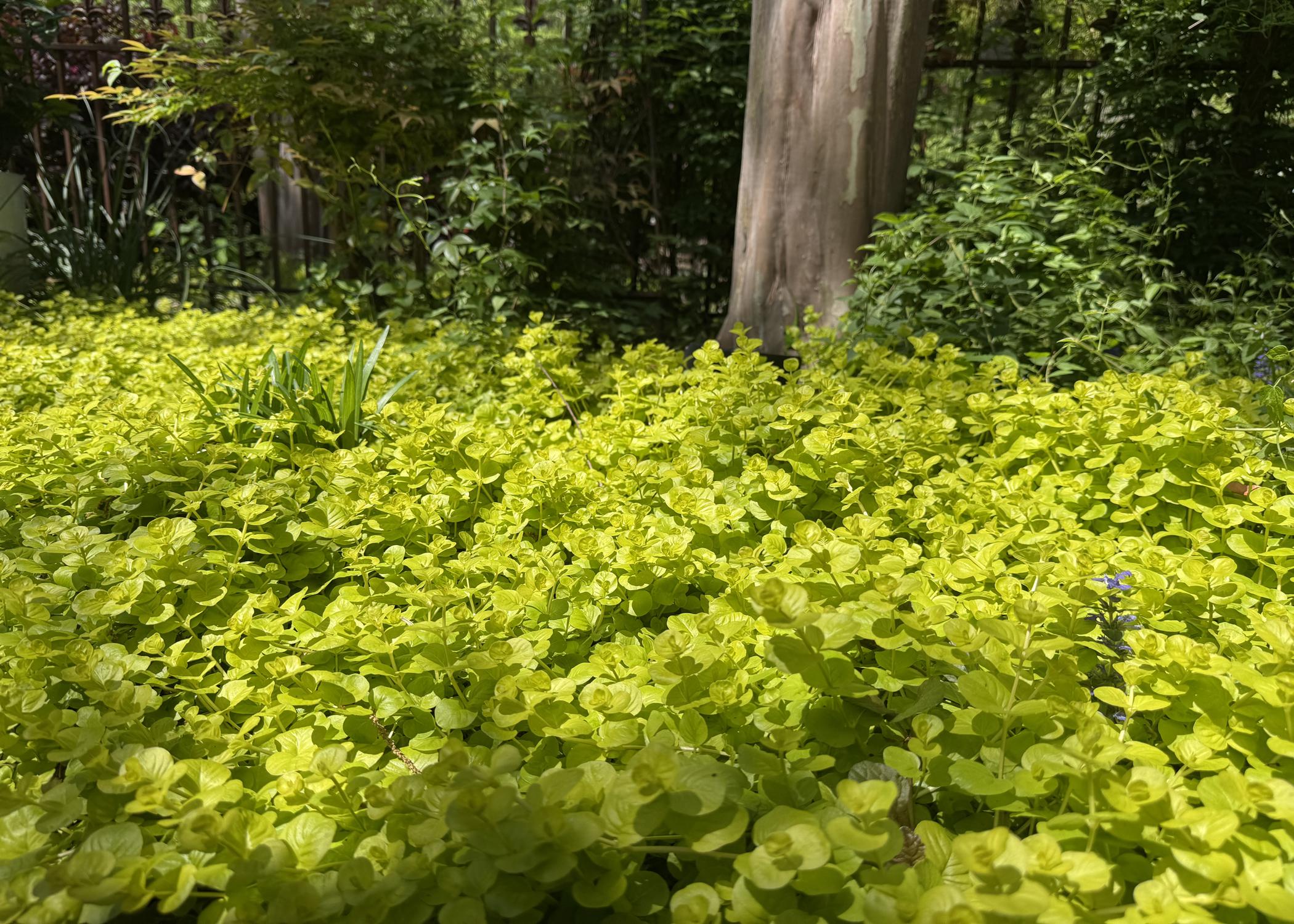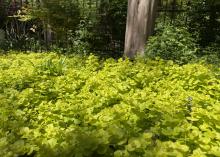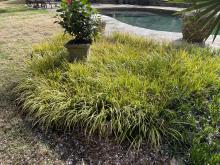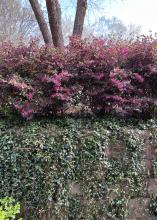Ground covers can do more for home gardens
While visiting the home of Devo and Rosemary Lancaster in Grenada, Mississippi, I was impressed by their creative use of ground cover plants throughout the landscape.
Each plant seemed carefully chosen not only for its beauty, but also for how it enhanced the flow and functionality of their garden spaces. The Lancasters’ ground covers added a sense of movement, softened hard edges, and brought color and texture to every corner of their yard.
A look at how they used ground covers and what plants caught my eye may give you some ideas to try in your own gardens.
Around the edge of the pool, I was drawn to a soft, golden glow that came from a mass of Japanese sweet flag. This refined, grass-like perennial brought elegance to the water’s edge. Its narrow, sword-shaped leaves arch gracefully outward, forming tidy clumps that seem to ripple in the breeze.
This particular variety had bright golden-yellow variegation, which shimmered beautifully in the morning light. When I crushed a few leaves between my fingers, I was rewarded with a clean, subtly sweet fragrance -- an unexpected bonus.
Japanese sweet flag thrives in moist to wet soil and is happiest in full sun to part shade. It’s ideal for the edges of ponds, pools or rain gardens where the soil stays consistently damp. To keep it looking its best, trim away any damaged leaves in early spring and divide the clumps every few years to promote fresh, vigorous growth.
One of the most dramatic pairings I saw was tucked beneath the burgundy-toned leaves of mature loropetalum shrubs. A lush curtain of Asiatic jasmine cascaded down the face of a brick retaining wall.
Its small, glossy green leaves formed a dense, polished mat that spilled elegantly over the edge, creating a gorgeous contrast with the rough texture of the brick. The effect was structured and elegant. I admired how well it softened the hardscape and tied together the upper and lower parts of the garden.
Asiatic jasmine is incredibly versatile. It thrives in full sun to deep shade and adapts well to most soil types, as long as there is good drainage. Once established, it is quite drought tolerant and needs very little care. I recommend shearing it back once or twice a year to keep the edges neat and to encourage denser growth.
Creeping Jenny, spilling like a golden waterfall down a sloped garden bed, created a pop of color I couldn’t ignore. Its round, coin-like leaves glowed chartreuse, catching the sunlight and brightening the whole area.
The way it hugged the ground and wound through neighboring plants added a layer of liveliness and whimsy to the scene.
You can use Creeping Jenny almost anywhere; it can be tucked into containers, planted at the feet of taller plants or allowed to roam freely across slopes. It grows best in moist, well-drained soils and appreciates full sun to partial shade, though in our Southern heat, a bit of afternoon shade helps prevent leaf scorching.
Creeping Jenny likes consistent watering and benefits from a light trim now and then to keep it full and compact. It also excels at erosion control, rooting wherever its stems touch soil, which makes it both beautiful and practical.
Walking through the Lancasters’ garden reminded me of just how powerful ground covers can be as background plants or leading characters in a well-designed landscape. They brought structure, softness, color and movement to every space they filled.
So whether you’re looking to soften the edges of a pool, add dimension to a retaining wall or brighten a shady corner, these ground covers offer a perfect combination of beauty, texture and practical function.
For more information on selecting and caring for ground cover plants, visit .






